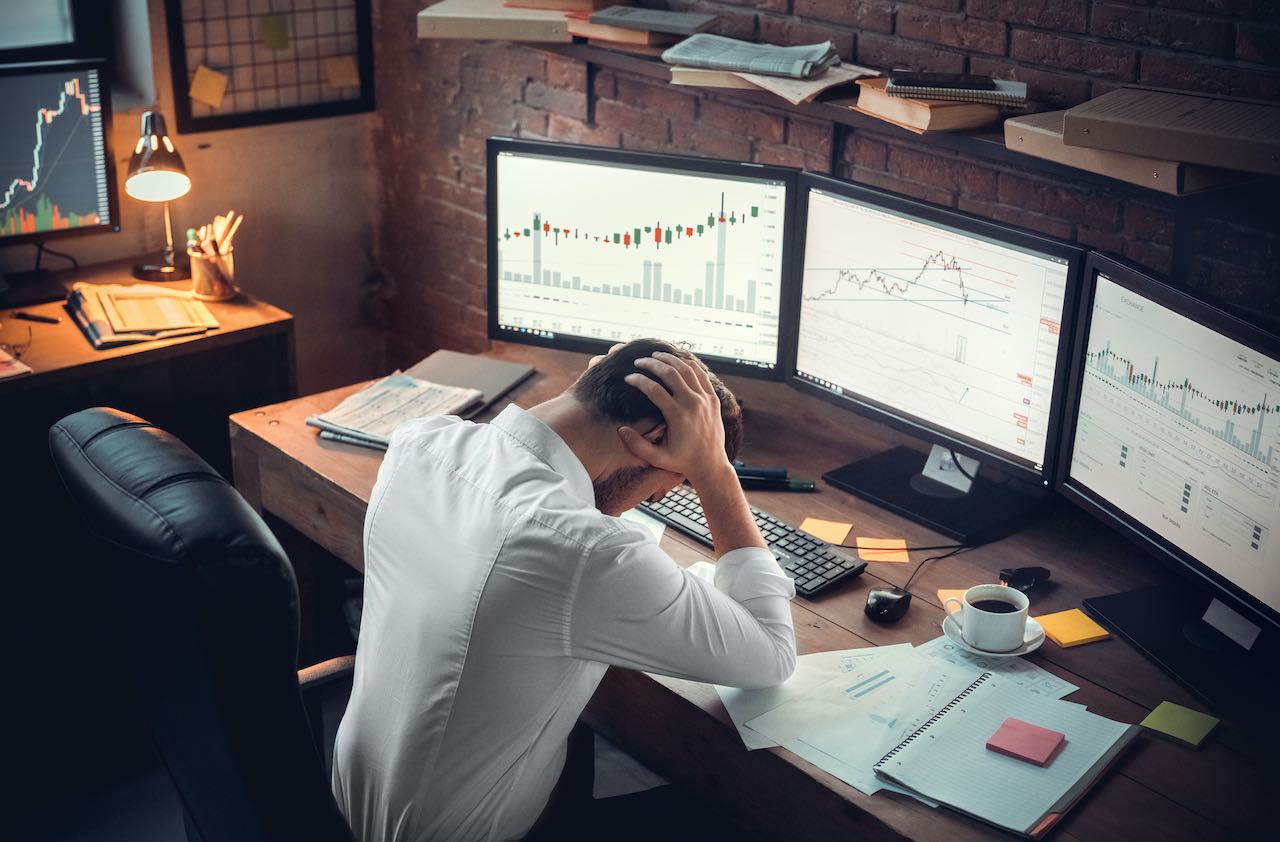Goldberg's Picks: The 4 Best Bond Funds for 2012
For the New Year, look to intermediate-term bond funds for the greatest growth potential and the least risk of loss in case rates spike.

The experts went into 2011 warning against owning long-term bonds. They believed bond yields would climb and that prices of long-term bonds in particular would suffer big losses. The experts were wrong -- big-time. Yields fell for most of the year. The benchmark ten-year Treasury returned an impressive 15.2%. Results for longer-term Treasuries were off-the-charts. Vanguard Long-Term Treasury Bond Fund (symbol VUSTX), whose bonds have an average maturity of 21 years, returned a whopping 26.0% (all returns are through December 23).
With bonds, however, what goes up does, eventually, come down. With the yield on the ten-year Treasury hovering around 2%, yields have a lot more room to rise than fall. And even though a surge in inflation, the bane of bond investors, seems like a distant possibility in a still-weak global economy, I'd avoid long-term funds.
Intermediate-term funds offer some potential for gains if rates continue to fall, but they will protect you from huge losses should rates spike. As with stock funds (ee Goldberg's Picks: The 5 Best Stock Funds for 2012), the biggest opportunities are with bonds from emerging markets. Here are my four favorite no-load bond funds for 2012, in order of lowest to highest risk.
From just $107.88 $24.99 for Kiplinger Personal Finance
Be a smarter, better informed investor.

Sign up for Kiplinger’s Free Newsletters
Profit and prosper with the best of expert advice on investing, taxes, retirement, personal finance and more - straight to your e-mail.
Profit and prosper with the best of expert advice - straight to your e-mail.
Vanguard Intermediate-Term Tax-Exempt (VWITX) is a perfect middle-of-the-road fund for many investors. Tax-Exempt's official SEC yield is 2.3%, but the fund is actually distributing tax-free interest at an annual rate of 3.6%. (The SEC yield reflects expected changes in the prices of a bond fund's holdings as they approach maturity.) Expenses are just 0.20% a year, and the fund invests almost entirely in bonds rated single-A or better. It has a duration of 5.5 years, which means its share price would decline by about 5.5% if yields on similar bonds rose by one percentage point. Alternatively, in the less likely event that yields fell by one percentage point, the share price would gain roughly 5.5%.
Like most Vanguard funds, this one is plain-vanilla; there's nothing fancy about it. And that's all to the good. The fund returned an annualized 4.9% over the past five years. Note: If you live in a place with a state income tax rate of 6% or higher, you may want to consider a low-cost, single-state tax-exempt fund to shield you from state income taxes as well as from federal taxes.
DoubleLine Total Return Bond (DBLTX), member of the Kiplinger 25, was just hatched in April 2010, but its manager, Jeffrey Gundlach, produced a brilliant record at TCW Total Return Bond (TGMNX) from 1993 through 2009. So far this year, DoubleLine has returned an impressive 9.3%. The fund, which yields more than 8%, comes in two share classes. As always, buy the cheaper one if you can. If you invest through an online broker, pay the transaction fee and buy the institutional share class (DBLTX), which charges 0.25 percentage point per year less than does the retail share class (DLTNX).
DoubleLine invests almost exclusively in mortgage-backed securities. Most are government-guaranteed mortgages, but 35% of assets are in private mortgages -- and some of these are the very same securities that triggered the 2008 financial meltdown. Gundlach has, in many cases, been able to buy these battered bonds at a fraction of their true value. But Eric Jacobson, director of fixed-income research at Morningstar, warns that if a market panic were to hit those securities, DoubleLine could get hammered. This isn't a buy-and-forget fund. I'd buy it, but then keep a close eye on it.
Loomis Sayles Bond (LSBDX), another Kiplinger 25 member, is a first-rate fund, but it's more volatile than most, and you need to have the patience to ride out the occasional spill. Over the past ten years, the fund returned an annualized 10% -- about double the return of the BarCap U.S. Aggregate Bond index. But the fund stepped into some big potholes along the way. It plunged 21.8% in 2008, the year of the financial crisis, and, more recently, surrendered 5.9% in the three-month period ending October 10, 2011 -- a bad patch for stocks and risky bonds.
Like good bargain-hunting stock pickers, Loomis Sayles's Dan Fuss and his three co-managers scoop up bonds when they're out of favor. Currently, the fund, which yields 4.9%, has 21% of its assets in high-yielding "junk" bonds -- bonds whose issuers stand a real chance of default. Another 9% is in convertible securities -- hybrids that are part stock and part bond. The fund even owns a handful of dividend-paying stocks. Roughly one-third of assets are in foreign bonds, mainly in fiscally sound developed nations, such as Canada, Australia and Norway. As with DoubleLine, buy the cheaper institutional share class through an online broker, even if you have to pay a transaction fee. The retail shares (LSBRX) cost 0.29 percentage point more annually.
Pimco Emerging Local Bond D (PLBDX) is a superb fund, but it has quite a kick and you should take it only in small doses. Over the past three years, the fund returned an annualized 14%. But it tumbled 11.1% in 2008, and in 2011 it lost 1.1%. Expenses are almost criminally high for a bond fund, at 1.35% annually. But Emerging Local, which yields 4.2%, has few worthy competitors.
The fund invests solely in emerging markets, and only in bonds denominated in local currencies. The economies of many emerging nations are fiscally sound -- better, in many instances, than the economies of developed nations. Yet emerging-markets bonds still pay more than bonds from the developed world. The justification for the higher yields became evident last summer. When panic hit the markets, investors bailed on emerging-markets bonds and ran to U.S. Treasuries. Manager Michael Gomez has wisely held relatively few bonds from emerging European nations; those bonds have been hurt severely by the euro-zone crisis.
Steven T. Goldberg (bio) is an investment adviser in the Washington, D.C. area.
Profit and prosper with the best of Kiplinger's advice on investing, taxes, retirement, personal finance and much more. Delivered daily. Enter your email in the box and click Sign Me Up.

-
 Four Spa Retreats for Well-Heeled Retirees
Four Spa Retreats for Well-Heeled RetireesWe hand-picked these U.S. spa retreats for their serenity, amenities and dedication to the comfort of older travelers. All are located in the Continental U.S.
-
 Four Military Benefits That Have Helped My Family
Four Military Benefits That Have Helped My FamilyMilitary life can be challenging for servicemembers and their families, but they're offered some significant financial benefits to help cushion the blow.
-
 ESG Gives Russia the Cold Shoulder, Too
ESG Gives Russia the Cold Shoulder, TooESG MSCI jumped on the Russia dogpile this week, reducing the country's ESG government rating to the lowest possible level.
-
 Morningstar Fund Ratings Adopt a Stricter Curve
Morningstar Fund Ratings Adopt a Stricter Curveinvesting Morningstar is in the middle of revamping its fund analysts' methodology. Can they beat the indices?
-
 Market Timing: The Importance of Doing Nothing
Market Timing: The Importance of Doing NothingInvestor Psychology Investors, as a whole, actually earn less than the funds that they invest in. Here’s how to avoid that fate.
-
 Commission-Free Trades: A Bad Deal for Investors
Commission-Free Trades: A Bad Deal for Investorsinvesting Four of the biggest online brokers just cut their commissions to $0 per transaction. Be careful, or you could be a big loser.
-
 Vanguard Dividend Growth Reopens. Enter at Will.
Vanguard Dividend Growth Reopens. Enter at Will.investing Why you should consider investing in this terrific fund now.
-
 Health Care Stocks: Buy Them While They're Down
Health Care Stocks: Buy Them While They're Downinvesting Why this sector should outperform for years to come
-
 Buy Marijuana Stocks Now? You'd Have to Be Stoned.
Buy Marijuana Stocks Now? You'd Have to Be Stoned.stocks Don't let your investment dollars go to pot
-
 4 Valuable Lessons From the 10-Year Bull Market
4 Valuable Lessons From the 10-Year Bull MarketInvestor Psychology Anything can happen next, so you must be mentally prepared.